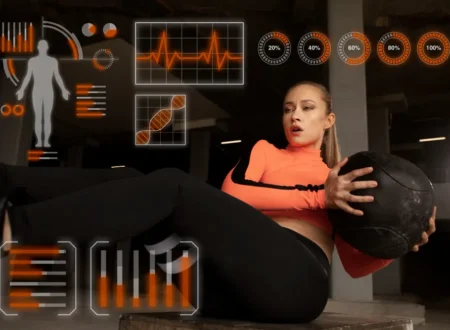How to Manage High Blood Pressure with Diet:
Managing high blood pressure is essential for long-term health, and knowing how to manage high blood pressure with diet can make a significant difference. High blood pressure, also known as hypertension, is a common condition that affects millions worldwide and poses significant health risks if left unmanaged. The good news is that diet is critical in controlling blood pressure levels and can help reduce dependence on medication. This article provides a comprehensive guide to dietary strategies that effectively manage high blood pressure.
High blood pressure occurs when the force of blood against artery walls remains consistently elevated. It’s often called the “silent killer” because it typically has no symptoms, yet it can lead to serious conditions like heart disease, stroke, and kidney failure. Controlling blood pressure is crucial, and diet is one of the most effective ways to do this.
1. Embrace the DASH Diet
The Dietary Approaches to Stop Hypertension (DASH) diet is explicitly intended to battle hypertension. This dietary pattern emphasizes whole foods and limits high-sodium and processed items. Key aspects of the DASH diet include:
- High in Fruits and Vegetables: These foods are rich in potassium, which helps to counterbalance sodium in the body.
- Whole Grains Over Refined Grains: Whole grains have more fiber, which supports heart health and stabilizes blood pressure.
- Lean Proteins: Choose lean sources of protein like poultry, fish, and legumes instead of red meat.
- Low-Fat Dairy Products: These provide calcium and vitamin D, essential for blood pressure regulation.
Sample DASH Meal Plan
- Breakfast: Cereal finished off with new berries and a sprinkle of flaxseeds.
- Lunch: Mixed salad with leafy greens, cherry tomatoes, cucumber, grilled chicken, and a dash of olive oil.
- Dinner: Grilled salmon with steamed broccoli and quinoa.
By following a DASH-focused meal plan, you can improve your blood pressure over time, as well as enjoy a balanced and nutrient-dense diet.

2. Reduce Sodium Intake
High sodium admission is an essential supporter of hypertension. The recommended daily sodium intake is no more than 2,300 milligrams, though less than 1,500 milligrams per day is ideal for those with hypertension.
Tips for Reducing Sodium
- Avoid Processed Foods: Packaged snacks, canned soups, and frozen meals often contain high levels of sodium.
- Read Food Labels: Search for “low-sodium” or “no additional salt” choices while shopping for food.
- Use Herbs and Spices: Rather than salt, season your food with spices, flavors, and citrus. This can add flavor without raising your pulse.
Reducing sodium may seem challenging at first, but with time, your taste buds will adjust, and you’ll likely find less salty foods more appealing.

3. Increase Potassium-Rich Foods
Potassium is crucial for blood pressure regulation because it helps counteract the effects of sodium. A potassium-rich eating regimen helps balance the body’s electrolyte levels, decreasing the burden on veins.
Potassium-Rich Foods to Include
- Bananas
- Spinach
- Sweet Potatoes
- Avocados
- Oranges
- Tomatoes
Incorporate these foods into your meals to naturally support blood pressure control.

4. Limit Alcohol Consumption
While moderate liquor utilization might have some medical advantages, inordinate drinking can prompt raised circulatory strain and other well-being chances. For those with hypertension, drinking liquor in moderation is ideal.
Alcohol Guidelines for Hypertension Management
- Men: Cutoff to two beverages each day.
- Women: Cutoff to one beverage each day.
By keeping alcohol intake within these limits, you can prevent blood pressure spikes and other health complications.

5. Prioritize Whole Grains Over Refined Carbohydrates
Whole grains contain more nutrients and fiber than refined grains, which can help stabilize blood pressure. Fiber helps improve heart health and promotes better digestion, both of which are beneficial for managing hypertension.
Whole Grains to Include
- Oats
- Brown Rice
- Barley
- Quinoa
- Whole Wheat Bread
Swapping refined carbohydrates like white bread and pasta for whole grains can reduce blood pressure over time and improve overall health.

6. Eat Healthy Fats and Limit Saturated Fats
Healthy fats, such as those found in olive oil, nuts, seeds, and avocados, are essential for heart health. Saturated fats, on the other hand, should be minimized as they can increase blood pressure and cholesterol levels.
Incorporating Healthy Fats
- Use Olive Oil: Use olive oil for cooking or as a salad dressing instead of butter.
- Snack on Nuts and Seeds: Almonds, walnuts, and flaxseeds are excellent snacks that provide healthy fats and fiber.
- Include Fatty Fish: Salmon, mackerel, and sardines are rich in omega-3 fatty acids, which can help lower blood pressure.
By choosing healthy fats and avoiding unhealthy ones, you can improve your heart health and support blood pressure management.

7. Maintain a Healthy Weight
Weight management is crucial for controlling blood pressure. Excess weight can strain the heart and blood vessels, making it harder for the body to regulate blood pressure. A reasonable eating regimen joined with normal active work can help accomplish and keep a solid weight.
Tips for Healthy Weight Management
- Eat Mindfully: Focus on yearning and completion prompts.
- Choose Smaller Portions: Eating smaller portions can prevent overeating.
- Stay Active: Hold back nothing 30 minutes of moderate active work most days of the week.
With these strategies, you can support blood pressure management through healthy weight maintenance.

8. Limit Added Sugars
Added sugars can add to weight gain, which can raise the pulse. Foods and drinks high in added sugars, such as soda, candy, and baked goods, should be limited for optimal blood pressure control.
Choosing Low-Sugar Alternatives
- Water or Herbal Teas: These are healthier options than sugary drinks.
- Fruit as a Sweet Treat: Fresh fruit provides natural sweetness without added sugars.
- Read Food Labels: Choose products with little or no added sugars.
Diminishing added sugars in your eating routine can fundamentally affect circulatory strain and general well-being.

9. Drink Plenty of Water
Staying hydrated is essential for maintaining healthy blood pressure. Dehydration can cause blood vessels to constrict, which may raise blood pressure. Practice it regularly to hydrate for the day.
How Much Water to Drink
- General Recommendation: Aim for at least eight 8-ounce glasses of water daily, or more if you’re active or live in a hot climate.
- Monitor Thirst: Listen to your body and drink when you’re thirsty.
Consistent hydration supports overall cardiovascular health and helps keep blood pressure levels in check.

10. Increase Magnesium-Rich Foods
Magnesium is another essential mineral that supports blood pressure regulation. It helps relax blood vessels, improving blood flow and reducing pressure on arterial walls. While magnesium deficiency is relatively rare, increasing intake through diet can still offer valuable health benefits for those managing hypertension.
Magnesium-rich foods to Include
- Leafy Greens: Spinach, kale, and Swiss chard.
- Nuts and Seeds: Almonds, pumpkin seeds, and sunflower seeds.
- Whole Grains: Earthy colored rice, oats, and entire wheat.
- Legumes: Black beans, chickpeas, and lentils.
Adding more magnesium-rich food sources to your eating regimen can normally assist with bringing circulatory strain and contribute to better heart well-being.

Conclusion
In conclusion, understanding how to manage high blood pressure with diet empowers you to take control of your health naturally and effectively. By embracing the DASH diet, reducing sodium, increasing potassium intake, and making other small but impactful changes, you can significantly improve your blood pressure and overall health. Remember that dietary changes may take time to show results, so consistency is key.
Discover amazing information and unique finds on FuseBay! Don’t miss out—must visit our website for exclusive articles and top-notch blogs tailored just for you!







